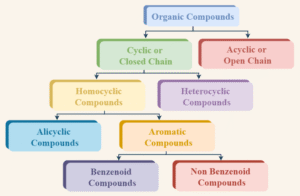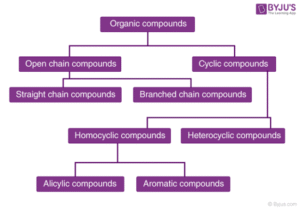Back to: Organic Chemistry 100 Level
Welcome to class!
Hello my brilliant friend! It’s such a delight to have you back again. I hope you’re ready for another exciting learning adventure. You’re doing something truly powerful—learning and growing every single day. Today’s lesson is one of the most important building blocks in Organic Chemistry, and I promise to walk with you step by step. Let’s get started together!
Classification And Nomenclature Of Organic Compounds
What Does It Mean to Classify and Name Organic Compounds?
Imagine entering a large Nigerian market like Balogun Market in Lagos. Everything is grouped—vegetables in one place, fabrics in another, electronics in another corner. This helps people find what they need easily. That’s exactly what we do in Organic Chemistry—we classify compounds into groups and give each one a proper name so we can identify them easily and avoid confusion.

Organic compounds are very many, so scientists came up with a universal system to group and name them properly. This helps people across Nigeria, Ghana, the UK or even Japan to understand exactly which compound is being referred to.
Classification of Organic Compounds
Organic compounds can be classified in two major ways:
Based on Structure
Acyclic (Open-chain) Compounds: These have straight or branched chains. Example: butane (used in cooking gas).
Cyclic (Closed-chain) Compounds: These form rings. They can be:
Alicyclic (non-aromatic rings) like cyclohexane.
Aromatic (contain benzene ring) like benzene found in some medicines and perfumes.
Based on Functional Groups
This is the most useful way. A functional group is the part of the compound that decides its chemical behaviour—like a signature or fingerprint.
Some common functional groups include:
Alkanes (–): Saturated hydrocarbons (e.g., methane)
Alkenes (=): Unsaturated with double bonds (e.g., ethene)
Alkynes (≡): Unsaturated with triple bonds (e.g., ethyne)
Alcohols (–OH): Like ethanol in beverages and sanitisers

Carboxylic acids (–COOH): Found in vinegar (ethanoic acid)
Esters, Ethers, Amines, Amides – and many more!
Nomenclature (Naming Organic Compounds)
Just like we have a system for naming babies in Nigeria (with surname, first name, and maybe a middle name), organic compounds also follow a system. The system is called IUPAC Nomenclature—International Union of Pure and Applied Chemistry.
The basic rules for naming are:
Identify the longest continuous carbon chain – This is the parent name (e.g., 3 carbons = propane).
Identify and name the functional group – This decides the suffix (e.g., –OH = alcohol → ends in –ol).
Number the carbon atoms in the main chain so the functional group gets the lowest number.
Add the name and position of any substituents or side chains (like methyl or ethyl).
Put everything together in the right order.
Example:
If you have a four-carbon chain with a double bond starting at carbon 1, and a –Cl group at carbon 2, the name will be: 2-chlorobut-1-ene.
Common Names vs IUPAC Names

Some compounds have common names like “acetic acid” (found in vinegar), but its IUPAC name is “ethanoic acid.” For exams and formal learning, IUPAC names are preferred.
Summary
- Organic compounds are classified based on their structure (open or cyclic) and functional groups.
- Functional groups determine the chemical behaviour of a compound.
- Nomenclature is the system of naming organic compounds using IUPAC rules.
- The name depends on the longest carbon chain, the functional group, and other attached groups.
- Learning to name compounds correctly helps avoid confusion and improves communication among scientists.
Evaluation
- What are the two main ways organic compounds are classified?
- What is a functional group? Give two examples.
- State the IUPAC name of CH₃CH₂CH₂OH.
- Give the name of this compound: CH₃CH=CH₂.
- Why is proper nomenclature important in Organic Chemistry?
You’re doing absolutely amazing! Keep it up, champ! You’re becoming a master of Organic Chemistry, one lesson at a time. Remember, with Afrilearn, your dreams are always valid, your mind is powerful, and your journey is worth every step. I can’t wait to see you in our next class. Keep learning, keep shining!
